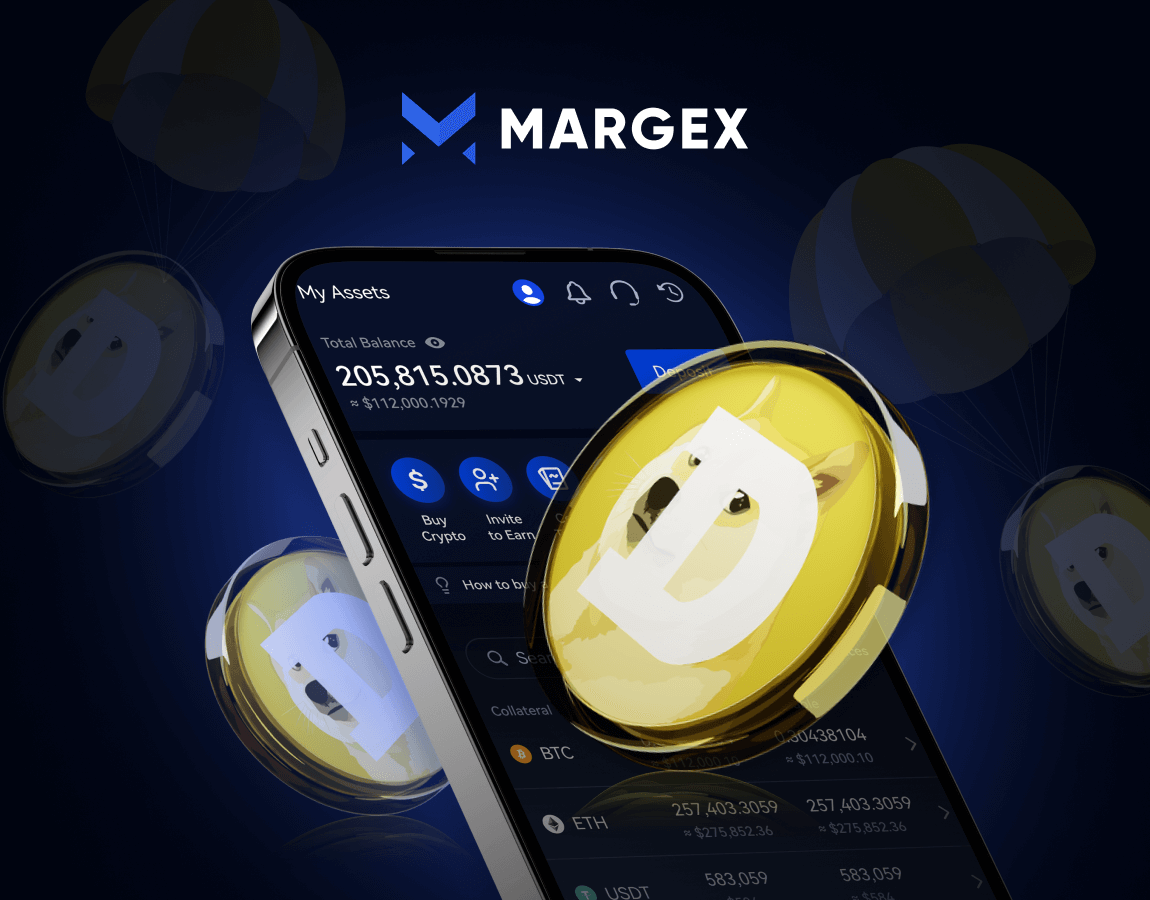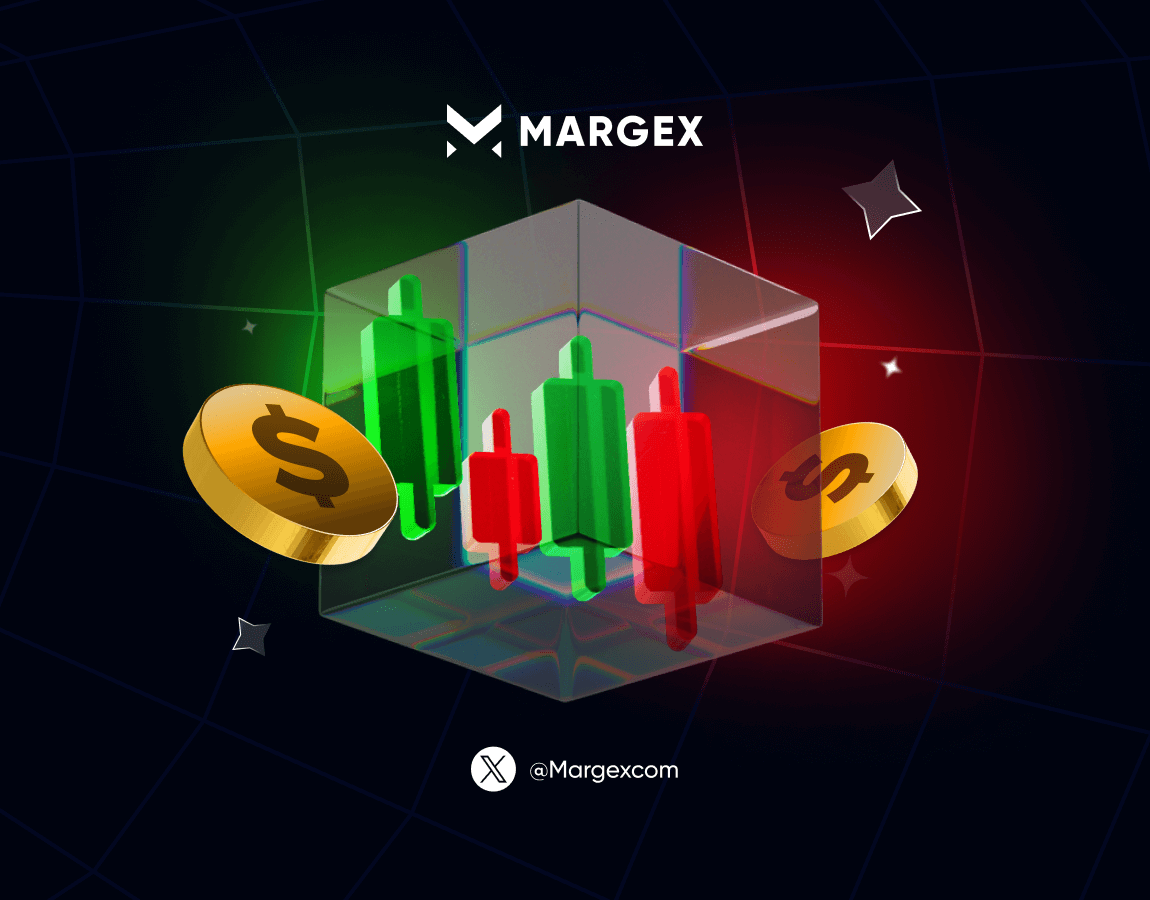Crypto vs Forex Trading, What Is Best for You?

Different types of financial investments drive success in both cryptocurrency trading and foreign exchange (forex) trading markets. Traders participate in digital platform transactions to exchange Bitcoin, Ethereum, and Litecoin without relying on authorities to manage their accounts.
In forex trading, people conduct transactions to exchange global currencies on currency marketplaces. Either way, you will face serious danger but can achieve substantial gains. Investors need to understand how these solutions differ, from picking the one that matches their investment goals to handling market risks.
An Overview of Cryptocurrency Trading
People who trade with cryptocurrency buy and sell digital assets through platforms operating independently or as controlled exchanges. Digital tokens work as secure online payments through codes that guard funds and decide when new coins can enter circulation.
Officials and governments do not control cryptocurrencies because they exist outside traditional financial systems. Their price moves are based solely on trading activity because no authority sets their value.
Advantages and Challenges of Cryptocurrency Trading
Please study these markets first because cryptocurrency trading brings both benefits and dangers.
Key Advantages of Crypto Trading
Cryptocurrencies regularly change value in brief moments. Those who predict cryptocurrency value shifts well can make big trading profits. Digital currency works through an open system without many rules, which helps traders keep more control. Investors have more freedom to create and put their trading ideas into practice.
Bitcoin and cryptocurrency platforms allow trading throughout the day and night, while traditional stock exchanges follow specific daily schedules. Traders use AI bots and copy trading systems to handle trading orders around the clock without monitoring requirements.
Cryptocurrency trading platforms let traders do business at lower expenses than typical financial markets, which saves them money.
The blockchain system in cryptocurrencies speeds up transactions and protects users from fraud and illegal market activities. Investors need to know basic crypto trading aspects to decide if this method fits their financial plans.
Key Considerations and Best Strategies for Crypto Trading
Challenges in Cryptocurrency Trading
Market Volatility and Associated Risks
The cryptocurrency market experiences wild price changes because it usually remains unstable. Traders need to watch their money carefully and make wise decisions to prevent monetary losses.
Regulatory Ambiguity and Potential Scams
The changing rules for trading cryptocurrencies make traders work in unclear conditions. No specific legal rules protect traders from fraudsters trying to exploit them. Check investment information carefully to be sure you invest in valuable digital funds.
Limited Availability of Reliable Information
The cryptocurrency sector remains new, so traders have difficulty finding reliable expert opinions about its investments. Traders need to locate evidence-based sources on which to base their financial decisions.
Essential Strategies for Effective Crypto Trading
Due to the difficult nature of cryptocurrency trading, effective outcomes require traders to use proven methods.
Thorough Market Research
You need to examine the information about each crypto asset before beginning trading. Assess crypto investments by studying technology foundations, market trends, trading numbers, and past results to estimate risks and returns.
Portfolio Diversification
Trading crypto without proper risk mitigation strategies puts investors in great danger. Creating a portfolio that stretches across multiple cryptocurrencies helps traders protect their investments when one coin experiences price drops. Invest assets across several types of digital currency instead of putting everything in one coin.
Keeping Up with Market Trends
Follow industry advancements, including news and regulations, that change cryptocurrency market performance. Major partnerships between companies, government actions, and economic changes directly impact crypto market trends.
Utilizing Risk Management Tools
Crypto trading must include effective ways to handle potential risks. Set automatic orders to stop losing money when market values drop sharply and to sell when profit targets are reached. These trading systems enable users to stop their losses safely while locking in profits at specific target levels.
Noteworthy Cryptocurrencies in the Market
Digital assets dominate cryptocurrency, yet people focus on a few widely used cryptocurrencies that provide real benefits. This list includes several prominent digital currencies.
Overview of Major Cryptocurrencies
Bitcoin (BTC)
People recognize Bitcoin as the initial and most popular cryptocurrency they started using. The system began operations in 2009 and became the leading digital asset due to its market value. The Bitcoin network lets everyone complete financial deals through its public blockchain system while maintaining secure data records.
| Year | Minimum Price | Average Price | Maximum Price |
|---|
Ethereum (ETH)
ETH claims second place in the cryptocurrency market after Bitcoin regarding market value. Unlike Bitcoin, Ethereum works as a platform that allows developers to build self-governing applications that run without relying on a central authority. Through smart contracts, Ethereum lets people make automatic transactions that run according to set rules without involving any middleman.
| Year | Minimum Price | Average Price | Maximum Price |
|---|
Dogecoin (DOGE)

After its inception in 2013 as a BTC parody, Dogecoin (DOGE) mobilized its own dedicated base of crypto enthusiasts. Although it draws engineering principles from Bitcoin, Dogecoin stands apart with its short block creation delays and unlimited supply, which helps people use it for small payments and tips.
The cryptocurrency world introduces new projects and technologies continuously. Traders and investors must follow market changes as the cryptocurrency sphere develops rapidly.
Methods of Trading Cryptocurrencies
You can trade cryptocurrencies on platforms like OKX or through self-governing trading platforms known as DEXs.
Centralized Exchanges (CEXs)
A centralized exchange brings buyers and sellers of cryptocurrencies together while handling all their trade operations. Digital currency users can access trading tools at OKX and Crypto.com alongside Kraken through an internet-based platform. A centralized platform runs these exchanges like banks and permits traditional currency plus cryptocurrency deals.
Centralized exchange platforms offer their users a range of financial products to trade, including spot trading and extended derivatives like futures and options. However, certain trading tools may become unavailable depending on local regulations about customer services. Users must know their country’s cryptocurrency exchange laws before participating.
Decentralized Exchanges (DEXs)
DEXs enable users to make direct cryptocurrency deals directly between one another without needing an exchange middleman. The platforms support secure financial deals by using blockchain technology and smart computer programs called smart contracts. DECs give users total control over their assets because they store them in digital wallets.
Users find increased safety from theft since they always control their digital assets on decentralized exchanges. Individuals who self-custody their private keys need to take proper security measures because if these keys are gone, their funds will become permanently lost.
Understanding Forex Trading
In foreign exchange trading, users exchange different currencies across the worldwide financial market. The worldwide forex market leads all others with more than $6 trillion in daily trading activity, which makes it an ideal trading environment for people worldwide.
Advantages and Challenges of Forex Trading
Advantages of Forex Trading
Massive forex trading lets investors complete deals smoothly with little price movement and small transaction fees. The ample trading flow helps traders complete transactions quickly and easily.
Forex trading becomes available anywhere on the planet through a regular internet connection. The platform provides trading sessions throughout working days every week for users wherever they are based on Earth.
Thanks to leveraging their forex trades, traders can work with high investment levels. A leverage system assists traders in earning more while putting their investments at greater risk.
The forex market lets traders select from different currency pairs while picking suitable trading methods for market conditions and trends. Analyzing forex market structure and cryptocurrency trading helps traders determine suitable options for reaching their financial objectives.
Key Aspects of Forex Trading: Risks, Best Practices, and Popular Currency Pairs
Challenges in Forex Trading
Increased Financial Risk
Before trading forex, traders need to recognize the high danger involved in the market so they can decide wisely whether to proceed. The increased ownership of assets through high leverage boosts profit and loss consequences, which you need to manage properly to avoid major financial problems.
Market Complexity and Analysis Requirements
Forex trading necessitates a strong grasp of market analysis and strategic planning. New forex traders face a difficult learning journey because they need to know how currencies shift and how economies and trading tools affect exchanges.
Risk of Fraud and Unregulated Brokers
The uncontrolled nature of the forex market makes it easy for scammers to operate their fake schemes. Before investing money, traders must look at available information to select an approved broker that operates within the proper regulations.
Essential Strategies for Successful Forex Trading
Create a Well-Structured Trading Plan
To succeed with forex trading in the long run, traders need to build their plan using complete market research combined with risk evaluation and financial target setting. Plans help traders make good trade decisions and handle risks properly.
Implement Robust Risk Management Strategies
Using stop-loss and take-profit orders as risk management methods helps traders defend their trading funds from market changes. When traders manage their risks well, they shield themselves against market conditions they cannot predict.
Stay Updated with Market Trends and Economic News
Experts need to monitor economic reports, central bank actions, and geopolitical shifts to successfully trade forex. When market news changes exchange rates, traders need to stay current with information to modify how they handle their investments.
Select a Reliable and Regulated Broker
When starting in forex trading you must select a broker known for their secure and dependable past performance before investing, traders need to check if their broker operates under approval from a financial regulatory body and provides good market conditions for trading security.
Commonly Traded Forex Pairs
The foreign exchange market offers traders different currency pairs to trade because each pair has distinct trading features. The following sets of currencies receive heavy trading activity:
EUR/USD (Euro/US Dollar)
The EUR/USD pair is the most actively traded currency pair globally. The Euro represents the European Union, while the US Dollar serves as the official currency of the United States. Due to its high liquidity and tight spreads, this pair is widely favored among forex traders.
USD/JPY (US Dollar/Japanese Yen)
The USD/JPY pair is the second most traded forex pair worldwide. It comprises the US Dollar, the primary reserve currency, and the Japanese Yen, known for its role in carry trades. This pair is recognized for its volatility, making it attractive for traders seeking rapid price movements.
GBP/USD (British Pound/US Dollar)

Commonly called “Cable,” the GBP/USD pair derives its name from the historical transatlantic telegraph cable used for exchanging financial data between the UK and the US. The British Pound and US Dollar form a highly volatile pair, appealing to traders interested in both short-term and long-term trading strategies.
Forex Trading vs. Crypto Trading
Understanding Forex Trading
Forex trading is primarily conducted through online brokerage platforms that offer an integrated suite of services. It is essential to take the time to research and select a reputable broker that aligns with your trading needs and provides adequate support. Some of the top forex brokers in the market today include IG, eToro, and Interactive Brokers.
To start, traders must register and create an account on the chosen platform. Similar to centralized cryptocurrency exchanges, depositing funds into the trading account is a prerequisite before initiating any trades. Many leading forex platforms offer demo trading features, enabling traders to test strategies, learn from mistakes, and gain practical experience without the risk of losing real money.
Key Differences Between Forex and Crypto Trading
While both forex and cryptocurrency trading involve speculation on price movements, they differ significantly. Below are some of the critical distinctions between these two markets:
Market Size and Liquidity
The forex market is the largest financial market globally, with a staggering daily trading volume exceeding $6 trillion. In contrast, the cryptocurrency market, though growing, has a significantly smaller total market capitalization of approximately $2 trillion. Due to its size, the forex market is more liquid and generally experiences less volatility than the crypto market.
Regulatory Oversight
Regulation plays a significant role in distinguishing these two markets. The forex industry is subject to regulatory oversight by financial authorities, ensuring brokers and traders adhere to established guidelines. On the other hand, the cryptocurrency market remains largely unregulated, with minimal supervision from governing bodies, leading to higher risks and uncertainties.
Trading Hours
Forex trading operates 24 hours a day, five days a week, allowing traders substantial opportunities to participate in the market. In contrast, the cryptocurrency market never closes and operates 24/7, providing even greater flexibility for traders who wish to trade at any time.
Volatility and Price Fluctuations
The cryptocurrency market is known for its extreme volatility, often experiencing rapid and substantial price movements within short periods. While forex trading is not devoid of volatility, it is generally more stable than cryptocurrencies, making it a preferred choice for traders seeking lower-risk exposure.
Range of Trading Options
Forex traders can access various currency pairs, allowing for diversification and strategic trading opportunities. In contrast, the cryptocurrency market is limited to digital assets, reducing the range of available trading instruments.
By understanding these differences, traders can make informed decisions on whether to engage in forex trading, cryptocurrency trading, or both based on their risk appetite, market preferences, and investment goals.
Key Considerations When Choosing Between Crypto and Forex Trading
Selecting between cryptocurrency and forex trading requires careful evaluation of multiple factors. Each market presents distinct opportunities and challenges, making it essential for traders to align their choices with their financial goals, risk appetite, and trading expertise.
Assessing Risk Tolerance
Both cryptocurrency and forex trading involve substantial risks, yet crypto trading is often considered more volatile due to frequent price fluctuations and minimal regulatory oversight. Traders must evaluate their risk tolerance and opt for the market that aligns with their ability to manage uncertainty and potential losses.
Understanding Market Fundamentals
A comprehensive understanding of the market is crucial for successful trading. Forex trading necessitates knowledge of global economic trends, central bank policies, and geopolitical events. Conversely, crypto trading requires familiarity with blockchain technology, cryptocurrency trends, and regulatory developments in the digital asset space.
Identifying Your Trading Style
Traders should consider their preferred trading approach when deciding between these two markets. Crypto trading is typically associated with short-term, speculative trading, often influenced by rapid market shifts. In contrast, forex trading offers opportunities for both short-term strategies, such as day trading, and long-term investment approaches, making it a more versatile option.
Evaluating Regulatory Frameworks
Regulation is a key differentiator between these two markets. Forex trading operates within a well-established regulatory framework governed by financial institutions and central banks worldwide. In contrast, the cryptocurrency market remains largely unregulated in many regions, leading to greater price volatility and potential security concerns. Traders should consider regulatory factors when choosing their preferred market.
Making an Informed Decision
Both cryptocurrency and forex trading provide avenues for traders to capitalize on market movements, but each comes with unique risks and advantages. Therefore, traders need to evaluate their investment objectives, risk tolerance, and level of market expertise before deciding.
Crypto trading is known for its high-risk, high-reward potential and requires deep knowledge of blockchain technology and digital assets. On the other hand, forex trading offers more stability and predictability and demands a strong grasp of global economic factors.
For those seeking diversification, incorporating both crypto and forex into a broader investment strategy may be beneficial. A well-balanced portfolio, including stocks, cryptocurrencies, and forex, can help mitigate risks, as gains in others may offset declines in some assets. However, conducting thorough research and due diligence remains essential when developing a diversified investment plan.
By adopting disciplined trading strategies, following best practices, and aligning investments with their financial objectives, traders can maximize their potential for success in either market. Understanding one’s risk appetite, trading style, and market knowledge will ultimately guide them toward the most suitable choice.


